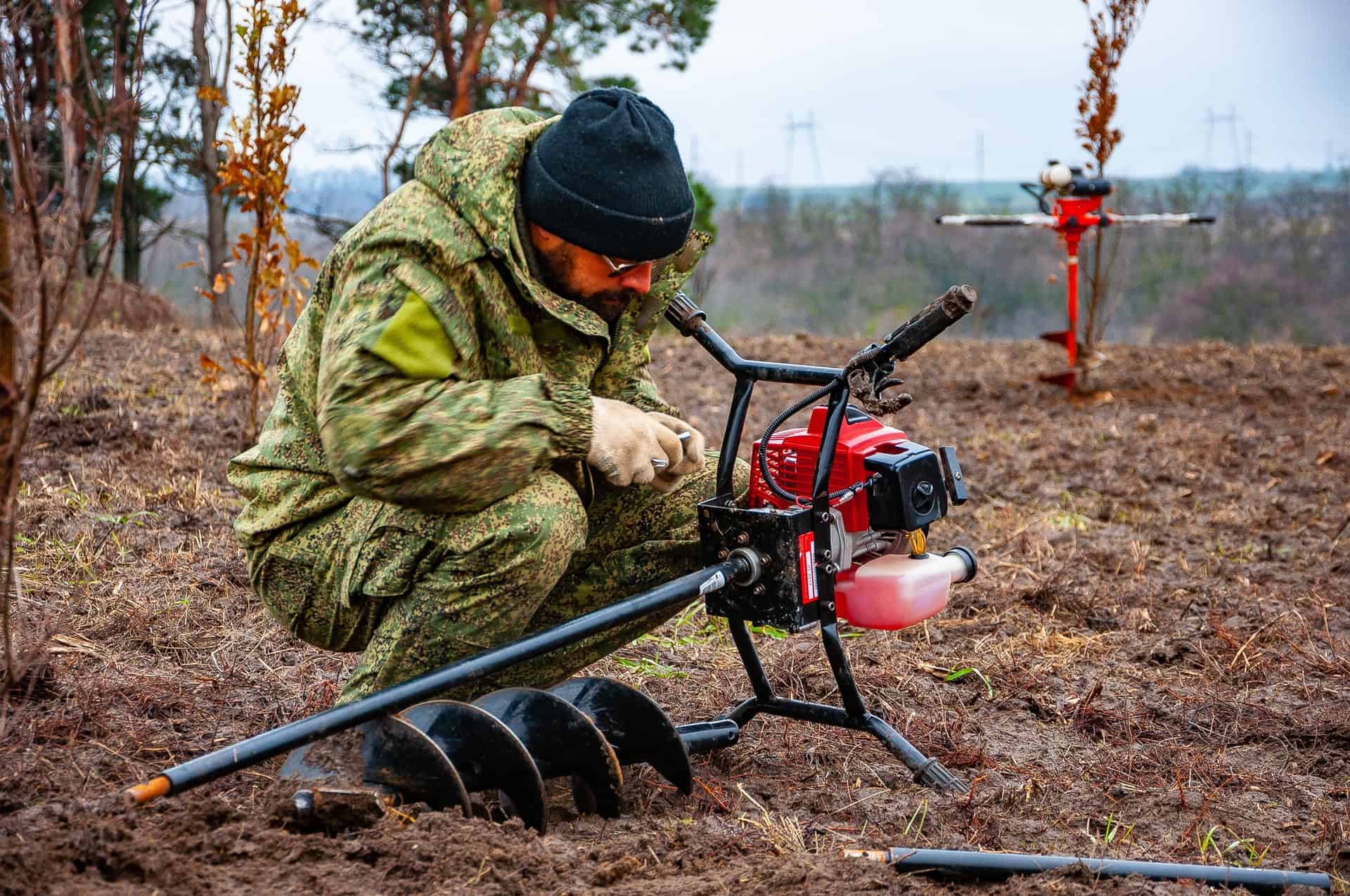- Best Firewood Carriers Guide: Which is Right for You? - July 27, 2022
- Water Oak Tree Guide: All You Need to Know - July 16, 2022
- How to Find the Best Chainsaw Helmet to Protect Yourself - July 10, 2022
With forests covering 31% of our planet, we need forestry professionals to protect and preserve our forests. We depend on forests to sift our drinking water, purify the air, and help alleviate climate change.
But increasing populations are putting forests under pressure, while global warming is causing forests to be more susceptible to fire, erosion, and clear cutting. This calls for trained professionals like foresters, soil scientists, silviculturists, fire managers, and others to join the workforce.
Obtaining a forestry degree can set you up nicely for an occupation in the creation, conservation, use, repair, and management of our planet’s forest cover.
In this guide, we’ll go over forestry training and career options to help you choose a forestry career, including what forestry is all about, different forestry career options out there, the pros and cons of forestry jobs, as well as the required forestry skills, education, and training.
What Is Forestry?
Forestry refers to the practice and science of creating, managing, conserving, using, and repairing woodland and forested areas. Forestry aims to maintain a healthy forest supply for human and environmental concerns.

Here are other vital facts about forestry:
- Forestry relies heavily on biology, mathematics, and chemistry.
- Forestry isn’t just about trees—it also involves soil health, the large ecosystems embedded in and surrounding the forest, and climate.
- Forestry touches many industries, including recreation, timber supply chains, agriculture, water management, wildlife preservation, erosion control, natural resource conservation, and lots more.
- Forestry professionals can work anywhere from green space conservation and ecology to helping the forestry industry find the right ways to use forest sustainably.
- Some forestry professionals also work to protect forests from threats like invasive pests that threaten three health or fires.
Forestry Career Options
Here are some of the careers you can pursue with a forestry degree.
Forestry jobs focus on the healthy growth and preservation of parks and woodlands. This can include woodland fire suppression or oversight efforts.
Technological advancements allow employees to manage these lands efficiently. For example, satellite imagery and geographic information system maps provide real-time facts for measuring the depth and growth of forests.
Forester
Foresters manage forest land, create forestry project plans, manage budgets, and supervise forest conservation workers and technicians. In addition, foresters make sure that forest staff activities take place within the law.
Conservation Scientists
Conservation scientists protect and manage parks, forests, and natural resources. In order to conserve the environment, these scientists work with private landowners and government agencies on matters of land improvement and use.

Conversation scientists employ forest monitoring software to collect information for analyzing the value of forest areas, gather information for forest inventory, and other purposes.
Forest Conservation Employees
Under the wing of forest conservation technicians and foresters, these employees protect and maintain forests. They plant trees, cut trees, spray forests with herbicides and insecticides, and clear debris.
Forest Conservation Technicians
Forest conservation technicians collect forest information and help improve forest quality. For example, they employ geographic information systems to compile and evaluate forest data, which helps them determine which seedlings to plant to improve forest health and how to get rid of trees.
Forest conservation technicians can also supervise some tasks of forest conservation employees.
Urban Forestry
Urban forestry duties typically include the maintenance and care of parkland trees, the implementation and development of street tree care programs, tree farm operations, as well as implementing, developing, and evaluating detailed strategies to protect, manage, and maintain trees in a town/city forest.
Wetlands Specialist
Wetland specialists maintain and improve water resource cleanliness, monitor and evaluate wetland data, implement remediation projects, survey wetlands, collect soil samples, track aquatic life, and write reports.
Silviculturist
This forestry professional works in the field with trees, analyzing the regeneration, composition, growth, and quality of woodland and forest trees. He or she is specially trained in detecting disease and pests that could damage woodland areas.
Soil Scientist
Soil scientists examine water and land resources as well as the health and composition of soil. They examine forests and their soil, including how they develop and change with natural processes and chemicals. They often split their time between field work and lab work.
Wildland Firefighter

Wildland firefighters primarily focus on the detection, prevention, pre-suppression, and suppression of forest fires. In times of little fire risk, they may carry out extra technical forestry duties. They work in the federal, state, and private sectors.
Wildlife Biologist
Wildlife biologists supervise forest projects and propose ways to alleviate their effect on wildlife. These professionals work with federal and state governments to assess wildlife populations, reinstate habitats, and devise and meet conservation goals.
Rangeland Manager
Rangeland managers help preserve vegetation for foraging or grazing, analyze ecosystem health, try to find invasive species, maintain diversity, and work hand in hand with livestock breeders and those that use state or federal lands for grazing as well as other purposes.
Forest Ranger

Forest rangers patrol parks, help visitors who need information and assistance and enforce rules. Rangers also keep an eye on problems such as insect infestation and flooding and send reports to supervisors.
The Ups and Downs of Forestry Careers
Forestry careers have the same work environment: apart from working in offices, forestry professionals spend time outside, sometimes in remote places. The desire to do field work is often a huge draw for these professionals.
However, working in the woods is no walk in the park! Forestry jobs can involve an irregular schedule and many tasks are labor-intensive and even dangerous sometimes.
The Ups
- Forestry careers may appeal to those who love the idea of working outdoors instead of spending their whole workday in the office. Part of the appeal is that most forest locations are remote and vary in terms of flora and fauna, as well as climate.
- Another attractive aspect for forestry professionals is the opportunity to actively participate in improving and conserving the environment. For example, they can help to prevent or contain wildfires, thereby saving animal and plant life, maintaining natural habitats, and preventing damage of nearby property.
- Some forestry employees, such as conservation scientists and foresters, enjoy the chance to use their forestry knowledge with the help of high-tech equipment. For instance, LiDAR is a survey technology that measures distance with laser light and helps conservation scientists draw maps of a whole forest to evaluate its health.
The Downs
- Despite the idyllic setting of forestry work, the job can be hazardous and even deadly. For instance, forestry professions are exposed to different types of weather. Apart from the unpleasantness and inconvenience of working in snow, rain, and other types of precipitation, extreme weather conditions and temperatures can create dangers—such as lightning strikes and ice-covered roads for those who work outside.
- In addition, working outside on the regular can be both physically and mentally exhausting. Forestry professionals must be happy with solitude, lugging heavy equipment, and having to deal with all types of forest creatures—from bears to mosquitoes.
- In addition, forest fires pose a huge threat to firefighters. Fire can wreak havoc for days, forcing forestry staff to work long, indefinite hours until a forest is safe.
Skills Required in Forestry Careers
Forestry employees who carry out more physical tasks require less education, while those who often analyze forests typically require more education. Some forestry employees can receive on-the-job training.

Nearly all forestry professionals have problem-solving and critical thinking abilities. They also require knowledge of sciences associated with natural resources like geography and biology, mathematics skills for activities like calculating how many seedlings to plant for every acre, as well as communication skills for writing reports, collaborating with colleagues, and making presentations.
Specific skills and attributes required can vary by career. For example, forest conservationists need physical strength to traverse forests carrying equipment. They must also have management skills since they manage projects with teams of forestry workers.
Forestry Training
Entry-level foresters, forest conservation technicians, and conservation scientists typically don’t require on-the-job training to make it in their careers.
Forest conservation workers usually get trained on the job, often through assisting seasoned employees for 1-12 months. Based on the state where they’re employed, they may also be required to receive training on how to use commercial pesticides.

Many forestry employees get safety training on managing and containing forest fires. Many states and the U.S. Forest Service offer courses.
Minimum training usually takes a few days and involves training in the behavior of forest fires, how people’s behavior affects the growth of a fire, and the need for controlling fires to maintain overall forest health. Moreover, these training programs revolve around worker safety.
Education Requirements for Forestry Professionals
To become a forestry professional, forest conservationists usually require a high school diploma, while forest conservation technicians require an associate’s degree. On the other hand, foresters and conservation scientists require a bachelor’s degree, at least.
Associate of Science in Forestry Technology introduces learners to forest protection, operations, and harvesting. Also, this course usually explores forest ecology and wildlife habitats. Students can also learn to read maps and photos, as well as study essential business principles.
Bachelor of Science in Forestry is a program that typically boasts advanced forestry programs, such as soil science, timber management, and wood anatomy. Students learn to apply satellite imagery, geographic information systems (GIS), and other technology. They can also be able to pick a specialization, including forest resources management or forest restorations and operations.
Master of Science in Forestry courses include advanced topics, including political ecology, fishery biology, and ecosystem analysis. Like the curricula of Bachelor’s Degrees, Master’s Degree courses often offer different areas of specialization, including forest molecular genetics or agroforestry.
PhD in Forestry programs prepare students for occupations in university-level teaching or research. PhD students typically must finish an independent study that substantially contributes to a forestry specialty like watershed hydrology or environmental impact assessment. Some universities and colleges also require PhD students to choose a minor.
Continuing Education
A large number of forestry workshops have taken place as a result of an increase in environmental and ecological awareness. Government institutions and conservation organizations offer a range of seminars on issues like forest-related climate effects, woodland management, and low-impact forestry.

There are various courses available to forestry pros who want to keep up with current forestry techniques like road drainage. These courses are typically offered through universities and colleges.
In addition, there’s voluntary certification available at the Society of American Foresters. Candidates for certification must meet experience and education requirements, apart from passing an examination. Some states require voluntary or mandatory registration or licensing.
In general, all you need to do to acquire licensing or registration is to complete a Bachelor’s Degree program in forestry or related fields, in addition to proof of work experience. You also might need to pass an examination.
Students wishing to take a forestry training course can pursue an undergraduate or graduate degree to get classroom learning and comprehensive hands-on training. Forestry professionals who’ve finished their degree program are eligible for certification and licensing.
Places to Receive Forestry Education
The majority of land-grant universities and colleges offer at least Bachelor’s Degrees in Forestry. Today, the Society of American Forestry (SAF) accredits dozens of these programs. The SAF governs curricula standards for forestry degree programs.
SAF-approved curricula focus on science, mathematics, computer science, technical forestry subjects, as well as communication skills. Simply loving forestry work isn’t a very convincing reason to become a forester (though it should be a necessity).
To become a forestry worker, you must like scientific program study and be ready to improve your science skills. In general, you must love working in the field, be physically fit, and be ready to relocate to where the forestry jobs are.
Forestry professionals must also have excellent communication skills and work well with folks. You also probably need to realize that as you acquire more knowledge and skills, you can rise through the ranks in the forestry industry.
Most colleges require that you finish a field session in a co-operative work study course with a state or federal agency or private firm, or in a camp run by the college. All schools urge students to find summer jobs that will earn them experience in conservation or forestry work.
Possible Electives
Popular electives include forestry, hydrology, law, engineering, wood technology, economics, wildlife, statistics, agronomy, recreation, and computer science. You definitely have a wealth of options to focus on in your chosen degree program.
Forestry curricula have more and more courses on wetland analysis, best management practices, wildlife conservation, and soil and water quality to cater to the growing emphasis on protecting woodlands during timber harvesting exercises.
Prospective foresters need to have a solid grasp of policy matters and the increasingly complex and numerous environmental regulations that affect many activities in the forestry industry.
Average Forestry Salaries
Forestry salaries vary according to location, years of experience, type of employer, and various other factors. You can earn more by working in the private industry or completing a Master’s Degree. However, jobs in the private sector are few and far between.
The Bureau of Labor Statistics reports that the median yearly wage of foresters and conservation scientists was $60,970 by May 2017. More than 53 percent of foresters and 59 percent of conservation scientists are employed in the public service at either the local, state, or federal level.
How much one earns also depends on where they live and what career they choose. Some areas pay higher salaries due to environmental conditions and demand.

If you want a higher salary and better job security, it’s important to get a good education. The higher the degree you obtain, the higher will be your earnings. The best part about forestry jobs is that there are lots of Bachelor’s, Master’s, and PhD degree programs available and online degrees are offered at many universities and colleges.
An Associate’s Degree qualifies you for entry-level work in various settings. Once you earn a Bachelor’s Degree, you’ll then be trained to take on higher positions like an environmentalist, wildlife protector, and conservationist, just to mention a few.
A graduate-level degree will enable you to pursue management and leadership roles that use your talents and skills in return for higher pay.
While in school, consider looking for internships to network with fellow professionals and gain valuable experience. Internships are a bridge between education and employment, as well as a means of recruitment for permanent positions.
Some universities and colleges help students look for internships since they have connections with organizations and businesses that hire students for part-time or summer work.
If you’re unsure of what forestry field you’d like to be employed in (state, federal, consulting, academic, industry), consult your academic adviser for more information about the available opportunities. Maybe you can assist various professionals to better understand what a typical workday looks like while making connections with industry colleagues at the same time.
Taking on work between semesters and part-time work over the summer will help you earn money while building your resume.
FAQs on Forestry Training and Career Guide
Question: What Qualifications Are Required to Become a Forestry Worker?
Answer: To work in forestry, you typically need a Bachelor’s Degree. Many forestry programs include essential courses on chemistry, biology, other physical sciences, and courses on environmental sciences and natural resources.
Question: What Are Three Examples of Forestry Careers
Answer: Three examples of forestry jobs include:
o Urban forester
o Forest ranger
o Forestry science technician
Question: Are Forestry Jobs Highly Sought After?
Answer: Employment of foresters and conservation scientists is expected to grow by 5 percent between 2019 and 2029, quicker than the average growth for all professionals. The continuous need for wildlife suppression and prevention services will help increase demand for foresters and conservation scientists.
Question: Does a Career in Forestry Pay Good?
Answer: By May 2012, foresters were earning an average of $57,140 per year, states the Bureau of Labor Statistics. The top 10 percent highest earners took home more than $78,490 annually.
Question: What Types of Forestry Jobs Are Available?
Answer: There are many types of forestry jobs, including:
o Foresters
o Forest engineers
o Academics and researchers
o Watershed managers
o Ecologists
o Biologists
o Geomatics and GIS specialists
o Land use and forest planners
o Forest technicians/technologists
Become a Forestry Professional Today
Forestry is a highly specialized study field that offers a world of opportunities in fields such as environmental science, conservation, and wildlife preservation. Earning a forestry degree can open you doors to a wide range of career opportunities.
Whether you’re passionate about conservation and nature or love spending time outdoors, a forestry career could be perfect for you. This fascinating industry has a wide variety of positions you can pursue, including firefighting and logging.
If you’ve earned a degree in forestry and are looking for work in this industry, make sure to know the options available to you so you can find a role that best suits you.
